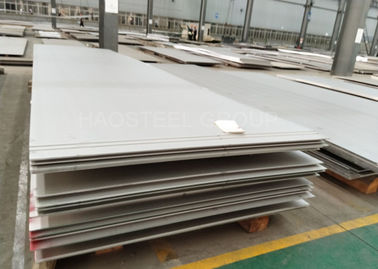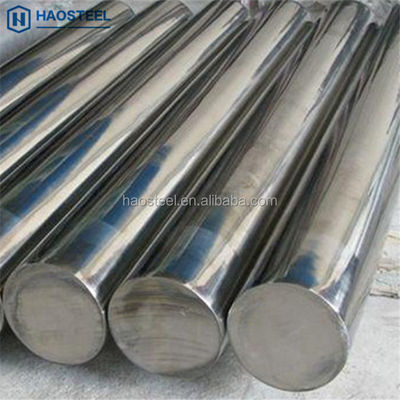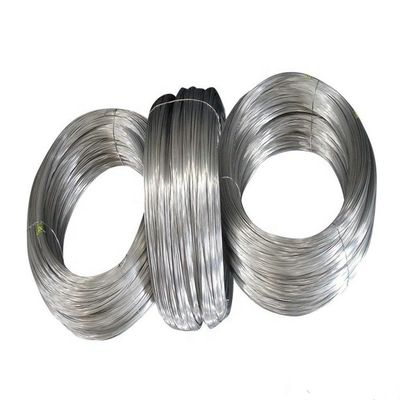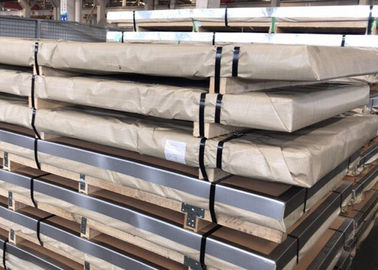Stainless Steel Sheet Cold Rolled 316 316L 1219mm 4' 1500mm 5' Width 2B Brushed Finish
Description:
Haosteel Stainless includes 316/316L (UNS S31600 / S31603), in sheet, sheet coil, plate, plate coil, bar, structural and tubular products. Generally, this grade is dual-certified to meet both 316 and 316L. The stainles steel 316/316L is ideally suited for applications requiring corrosion resistance superior to type 304 and has good elevated temperature strength.
General Properties:
The stainles steel 316/316L is molybdenum-bearing austenitic stainless steel. The higher nickel and molybdenum content in this grade allows it to demonstrate better overall corrosion resistant properties than 304, especially with regard to pitting and crevice corrosion in chloride environments. In addition, Alloy 316/ 316L provides excellent elevated temperature tensile, creep and stress-rupture strengths, as well as outstanding formability and weldability. 316L is the lower carbon version of 316 and is immune from sensitization; therefore, it is very frequently used in heavy gauge welded components.
Standards:
ASTM/ASME: UNS S31600 / S31603
JIS G: SUS316, SUS316L
DIN: 1.4401 / 1.4404
Chemical Properties:
|
Grade
Element
|
C
|
Mn
|
Si
|
P
|
S
|
Cr
|
Mo
|
Ni
|
N
|
|
316
(S31600)
|
0.08
max
|
2.0
max
|
0.75
max
|
0.045
max
|
0.03
max
|
min: 16.0
max: 18.0
|
min: 2.0
max: 3.0
|
min: 10.0
max: 14.0
|
0.10
max
|
|
316L
(S31603)
|
0.03
max
|
2.0
max
|
0.75
max
|
0.045
max
|
0.03
max
|
min: 16.0
max: 18.0
|
min: 2.0
max: 3.0
|
min: 10.0
max: 14.0
|
0.10
max
|
Mechanical Properties:
|
Grade
|
Tensile Strength
MPa (min)
|
Yield Strength
0.2% MPa (min)
|
Elongation
%
|
Hardness
(HB) MAX
|
Hardness
(HRB) MAX
|
|
316
(S31600)
|
515
|
205
|
40
|
217
|
95
|
|
316L
(S31603)
|
485
|
170
|
40
|
217
|
95
|
Corrosion Resistance:
Generally more resistant than 304 in range of atmospheric environments and many corrosive media due to the increased chromium and molybdenum content.
Subject to pitting and crevice corrosion in warm chloride environments, and to stress corrosion cracking above about 122°F (50°C).
Considered resistant to potable water with up to about 1000mg/L chlorides at ambient temperatures, reducing to about 500mg/L at 140°F (60°C).
Usually regarded as the “marine grade stainless steel” – but is not resistant to warm sea water.
Heat Resistance:
Good oxidation resistance in intermittent service to 1600°F (870°C) and in continuous service to 1700°F (925°C). Grade 316L is more resistant to carbide precipitation.
Welding Characteristics:
Excellent weldability by all standard fusion methods, both with and without filler metals.
Heavy welded sections in Grade 316 require post-weld annealing for maximum corrosion resistance, this is not required for grade 316L.
Heat Treatment:
Annealing temperature range is 1900 to 2100°F (1038 to 1149°C).
Cannot be hardened by heat treatment.
Special consideration is needed to compensate for a higher coefficient of thermal expansion to avoid warping and distortion.
Processing – Hot Forming:
Most producers recommend a maximum forging temperature between 2100°F and 2300°F
Do not forge below 1700°F (927°C) Best
Corrosion resistance is obtained if the forgings are given a final anneal.
Processing – Cold Forming:
316/316L types being extremely tough and ductile, can be readily cold worked such as roll form, swaging, cold heading, deep drawing,
bent, etc., without difficulty
Severely cold formed parts should be annealed to remove stresses.
Machineability:
Type 316/316L is somewhat more difficult to machine than Type 304 because of its toughness.
316/316L machines with chip characteristics that are tough and strong.
Chip breakers and curlers are advised.
As large a tool as possible and great amounts of cutting fluid should be used.
Heavy positive feeds at low speeds should be considered since 316/316L work hardens rapidly.
Applications:
Food preparation equipment, especially in chloride environments
Chemical processing, equipment
Laboratory benches and equipment
Rubber, plastics, pulp & paper machinery
Pollution control equipment
Boat fittings, value and pump trim
Heat exchangers
Pharmaceutical and textile industries
Condensers, evaporators and tanks


 Your message must be between 20-3,000 characters!
Your message must be between 20-3,000 characters! Please check your E-mail!
Please check your E-mail!  Your message must be between 20-3,000 characters!
Your message must be between 20-3,000 characters! Please check your E-mail!
Please check your E-mail! 














